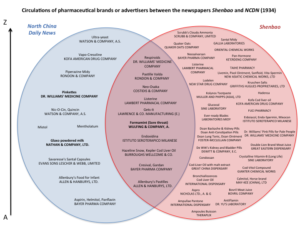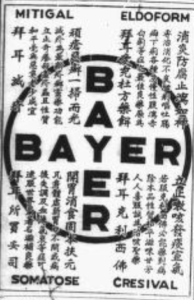“that treacherous perfidious race of Beings, whose natural piratical dispositions might, by the small size of our vessel, [provoke] them to some act of violence”.
John Septimus Roe was a British explorer, navigator, and surveyor who is most renowned for charting the Western coast of Australia in the 18th century. He recorded his expeditions both in the ship logbook, letters, and navigational and coastal sketches. These sources are largely valuable for their contrasting depictions of his journey through Southeast Asia to get to Australia. Within them, we are confronted with both scientific visual representation and a haze of tropical madness- the phenomenon of ‘tropicality’, whereby imperial preconceptions of the tropical climate and its inhabitants seeped into their lived experience of these ‘other’ countries. As historians our task is to navigate the fog and determine the value of these sources beyond their accusations, preconceptions, and racism. Felix Driver’s work on the ‘Views and Visions’ of the tropics is significant for beginning this task.
Driver presents the idea of the “view” and the “vision” as a means for distinction between ‘tropicality’ and the tropical. He defines the view as a process where “landscapes are depicted at a distance, their surface features translated into a recognisable visual code”.[1] In this way, landscape sketches became a means of scientific representation through their “topographic aesthetic”.[2] Meanwhile, Driver argues, the “vision” was a dangerously “transformative” concept.[3] It included the spectator as an active participant in the scene, creating an image of the whole which was influenced by the preconceptions, motivations, ‘haze’ which imbued the explorer. Both concepts are useful for determining the influence of ‘tropicality’ on 18th century visions of Asia and Southeast Asia.
The full entry from Roe’s logbook on the Tamar, which set sail in 1824, reads as follows:
“Traces of Malays, who come here to fish for Trepang (a kind of blubbery soft fish, which sells well to the Chinese) were everywhere seen, and put us on our guard against that treacherous perfidious race of Beings, whose natural piratical dispositions might, by the small size of our vessel, [provoke] them to some act of violence”.[4]
Here, Roe ‘others’ the Malaysian population, by implying that their geographical position on an island influences their psychological nature. He suggests that because of their coexistence with the sea as a life source, they have “natural piratical dispositions”, as if the wild coastline infiltrates their character. They are violent, unpredictable, and domineering- all according to the small “traces” of their existence which Roe has actually witnessed. The notion of the tropical landscape becoming synonymous with the characteristics of a population also adds to the thrill of Roe’s adventure. He adopts a self-congratulatory tone when he later marks himself immune from the influence of the climate, which “saps” the strength of his colleagues- “I feel great pleasure in being able to say that [my constitution] is exempt from that particularity”.[5] Whilst the analytical interlude in the first entry related to the Trepang fish gives us a small insight into the transnational relationships across Asia and broader economic features of the Malaysian population, the extract is dominated by Roe’s preconceived “vision” of the tropics. His writing attempts to reconcile the haze of ‘tropicality’, which sees Asia as both thrilling and degenerative, with the empirical evidence of his expedition. In doing so, the haze becomes stronger, as his preconceptions of ‘tropicality’ are projected onto the natural landscape.
By contrast, Roe’s accompanying drawings are a valuable insight into his journey and serve as both an empirical and historical source which provide a “view” of the tropics uninhibited by his own gaze.[6] In his coastal sketches, the mountains form part of a panoramic view which suggest that we too, are a witness to this unfamiliar landscape. The observational detail of these sketches continues to the edge of the page, situating the viewer at the edge of the boat from which the sketch was made. Drops of plantain juice on the parchment itself immerse the viewer in Roe’s view, providing tangible evidence of the tropics, not as a singular specimen, but as a vibrant and interactive whole. Consequently, they are valuable for their scientific accuracy and spatial placement- we are aware of the presence of the explorer, without their unwanted encroachment on the real view. Rather than being immersed in a tropical haze, we are immersed in the explorer’s empirical and representational gaze, which sought to create an accurate and uninhibited portrayal of their travels. Driver states that the drawings are evidence of “more personal aspirations” too, a testament to the explorer and his craft. As such, they are evidence of a very real passion, rather than a passionate haze of imperialist intention.
“If we look more closely at the archive of tropical travel…it is clear that [the travels] raised as many questions as they answered. How was the experience of travelling itself to be put into words and images?”[7]
As Driver notes, the view of the tropics is hard to decipher from amongst the multi-layered visions of ‘tropicality’ which infiltrated the explorer’s mind. The questions which it raised for the explorer however, are of equal importance to the historian when studying travel accounts of Asia and Southeast Asia- what were the processes, both empirical and psychological, which were behind the words and images?
[1] Felix Driver, ‘Imagining the Tropics: Views and Visions of the Tropical World’, Singapore Journal of Tropical Geography, vol.25, no. 1 (2004), p.4.
[2] Ibid, p.4.
[3] Ibid, p.5.
[4] John Septimus Roe, The Mermaid and Bath Letters, (1817-1823), <https://www.matthewfishburn.com/writing/2021/2/15/letters-of-john-septimus-roe> [accessed: 04 February 2022], p.124.
[5] Ibid, p.106.
[6] Felix Driver, ‘Imagining the Tropics’, p.10.
[7] Ibid, p.14

